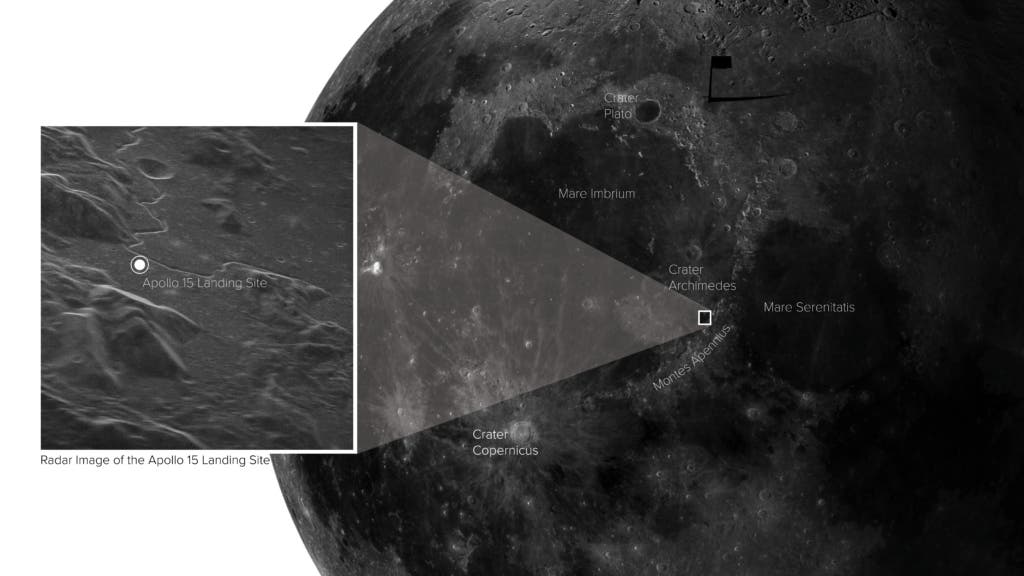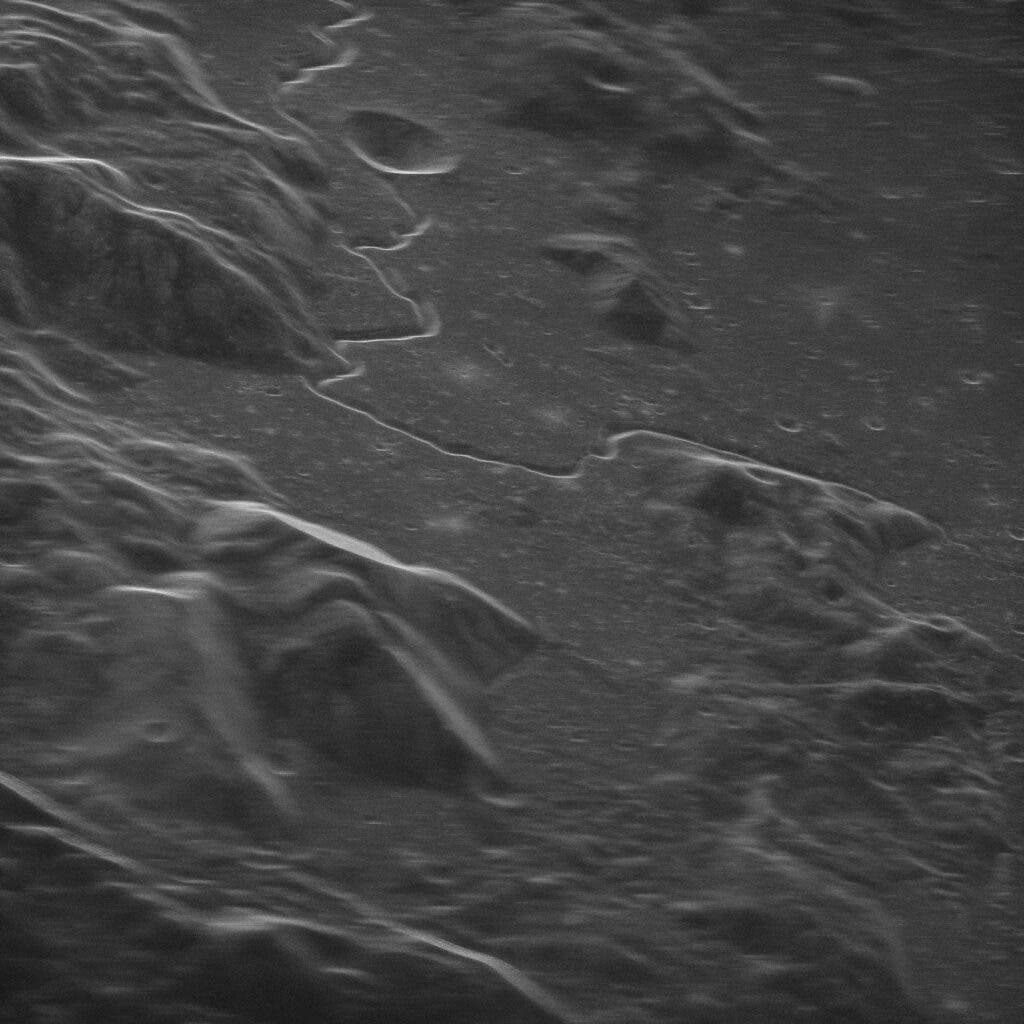
This might look like your typical space photo, but there’s more to it than meets the eye. This stunning image of the Apollo 15 landing site wasn’t taken by an optical instrument, such as a camera, but rather by a radar telescope that bounced radio waves off the surface of the moon.
In the image, we can see Hadley Rille, the meandering channel that runs across the middle. It was formed millions of years ago by collapsing lava tubes during a time when the moon was still volcanically active. The circular feature pictured is, you’ve guessed it, a crater known as Hadley C, measuring 6 kilometers (3.7 miles) in diameter.

What’s amazing about this photo is its astonishing resolution, which can resolve objects as small as 5 meters across from 384,000 kilometers (239,000 miles) away.
Because Earth has a thick atmosphere and an active weather system, it can be challenging to image things with a normal optical telescope. For this reason, scientists typically position their telescopes at high-altitude locations, perched on a mountain. A fine example is the Atacama Large Millimeter/submillimeter Array (ALMA) telescope facility that sits on top of a 5,000m-high plateau in Chile.
But if you use radio waves, the interference is minimal. For the past two years, scientists at the National Radio Astronomy Observatory (NRAO) in the U.S. have been experimenting with radio imaging technology that can take astronomical snapshots from Earth. The fruit of their labor is the Green Bank Telescope (GBT) in West Virginia — the world’s largest fully steerable radio telescope.
This telescope is fitted with a powerful transmitter that beamed radio waves onto the Apollo 15 landing site region. The reflected waves that bounced off the lunar surface were detected by NRAO’s continent-wide Very Long Baseline Array (VLBA). This pattern was decoded in order to construct a high-resolution image of the site — and the results speak for themselves.
What’s amazing is that we’re likely seeing just the tip of the iceberg of what this kind of technology can do. The researchers plan to scale up this proof-of-concept with a much more powerful transmitter that will allow them to image small objects passing by Earth or even as far into the solar system as Jupiter’s moons.
“The planned system will be a leap forward in radar science, allowing access to never before seen features of the Solar System from right here on Earth,” said Karen O’Neil, the Green Bank Observatory site director.


